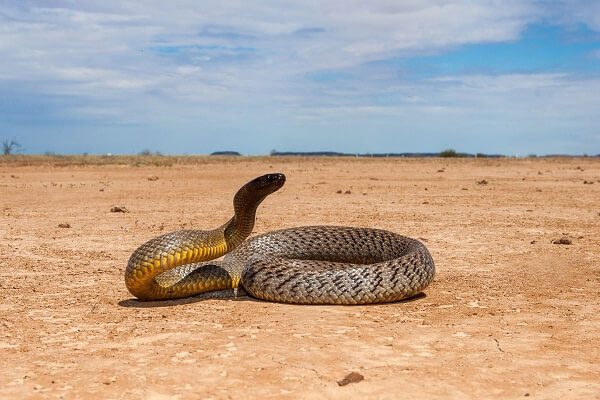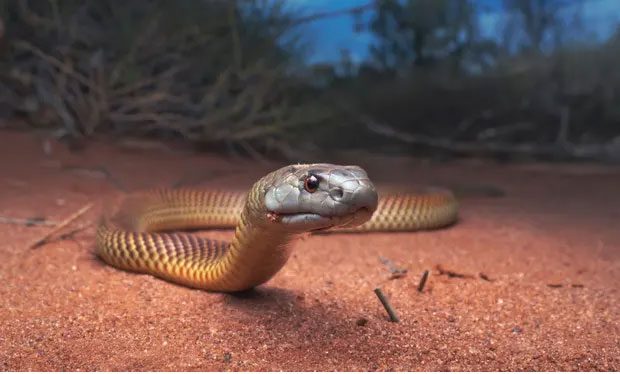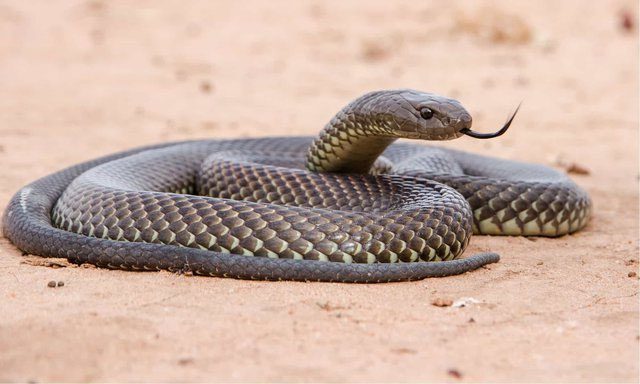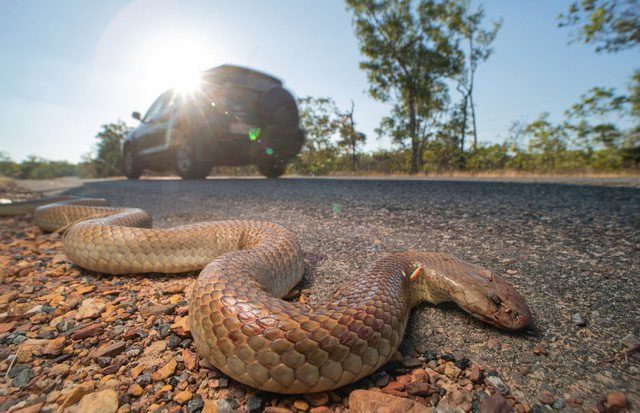In the battle between a venomous snake capable of killing 100 people at once and the Mulga snake, which one will emerge victorious?
Australia is arguably one of the most unique countries in the world, home to many bizarre animal species that can be described as “one of a kind.” Among these is the inland Taipan, renowned as the most venomous snake on Earth.

The inland Taipan is known as the most venomous land snake in the world. (Photo: ABC).
Research conducted by scientists indicates that the inland Taipan’s venom is 50 times more toxic than that of a common cobra and 10 times more toxic than that of a Mojave rattlesnake. Scientists confirm that the Taipan is the most venomous snake compared to any other terrestrial snake species. However, in a life-or-death struggle, the Taipan has suffered defeat against another snake species. Why is that?
The inland Taipan, also known as the fierce snake, has the scientific name Oxyuranus microlepidotus. This snake is found in the inland regions of Australia, including Queensland, South Australia, New South Wales, and the Northern Territory.

The Taipan can change color with the seasons. (Photo: ABC).
The average length of the Taipan ranges from 1.8 to 2.5 meters. Notably, they can change color with the seasons; in summer, they exhibit a light green hue, while in winter, they turn dark brown. This color change helps the Taipan adapt to the harsh climate of its habitat, as their skin alters its light absorption levels.
Taipans primarily feed on small mammals, with mice being their favorite prey. The reproductive cycle of the Taipan is dependent on the mouse population; when the mouse population is high, Taipans reproduce more frequently, laying between 12 to 20 eggs at a time, which hatch after about two months.

With a venom volume of 100 mg, the Taipan can kill 100 people within 45 minutes if not treated promptly. (Photo: ABC).
As mentioned earlier, the Taipan possesses the most terrifying venom in the world. The maximum amount of venom it can deliver in a single bite is 100 mg. With this amount, the Taipan can cause the death of 100 people within 30 to 45 minutes without timely medical intervention. Even a small amount of venom released with each bite can kill 250,000 mice instantly.
After a swift bite from the Taipan, 60% of heart muscle cells can be destroyed within the first 10 minutes. Once the venom enters the body, it devastates the nervous system, leading to severe headaches and total paralysis of the victim.

The attack speed of the Taipan is extremely fast and difficult to detect with the naked eye. (Photo: ABC).
Scientists also note that the inland Taipan is not only highly venomous but also possesses an incredibly fast attack speed. When threatened, they strike forward and bite their opponent in an instant. Their speed is so rapid that it is hard to perceive with the naked eye, making the Taipan one of the fastest venomous snakes.
The Life-and-Death Battle Between Two Venomous Snakes
Although the Taipan is often referred to as the “fierce snake,” this name actually describes its venom. In reality, the Taipan is extremely timid. They almost always flee when faced with danger. As long as they are not provoked, Taipans will not actively bite humans.
However, despite the Taipan having the most potent venom among terrestrial snakes, it is not the victor. In numerous encounters, the Taipan has suffered defeat against an opponent with less potent venom, the King Brown snake, also known as the Mulga snake.

While the King Brown snake does not have venom as strong as the Taipan, it can easily win in battles between the two species. (Photo: ABC).
The King Brown snake is a member of the cobra family and is a large snake, measuring between 2.5 to 3 meters in length and weighing between 3 to 6 kg. Their coloration ranges from light brown to dark brown and black. They are commonly found in Queensland, South Australia, and New South Wales.
The temperament of the King Brown snake varies depending on its habitat. The Southern Mulga is often shy and remains still, while the Northern Mulga is easily agitated when disturbed or feeling threatened. In such cases, they will hiss loudly, raise their body high like a cobra, and prepare to attack.

Each bite from the Mulga snake releases about 150 mg of venom, while other snake species typically release between 10 to 40 mg. (Photo: ABC).
The venom of the King Brown snake can destroy blood cells, affect muscles, and also impact nerve cells. While the King Brown does not have venom as potent as that of the inland Taipan, the amount of venom it delivers in each bite is greater than that of any other snake in the world. On average, each bite from the Mulga snake releases about 150 mg of venom, while other snakes typically release between 10 to 40 mg. However, this is not the reason why the King Brown wins against the Taipan.
Scientists have analyzed and identified a crucial factor that allows the King Brown snake to defeat the Taipan: its immunity to the venom of other venomous snakes.

The King Brown snake is one of the rare snakes with antibodies against venom, allowing it to easily defeat the Taipan. (Photo: ABC).
The King Brown snake is also one of the rare snakes that possesses more than two antibodies against venom. These are identifiable types of antibodies. Thus, the King Brown can easily kill the Taipan and make it its meal.





















































